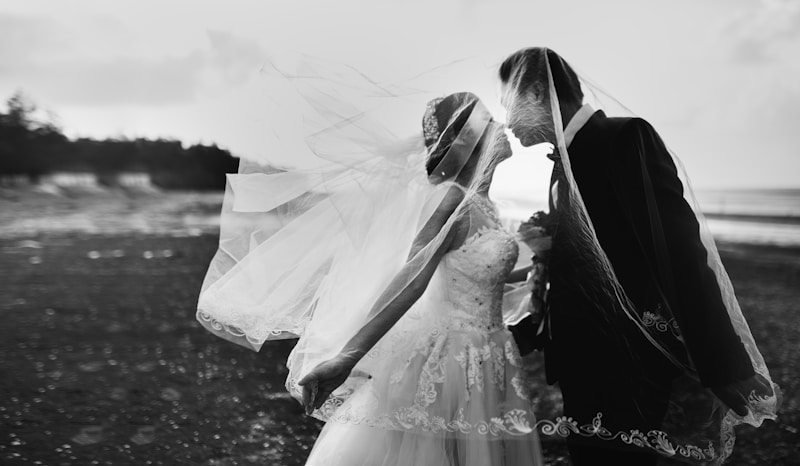Navigating Bridal Size Mistakes: A Comprehensive Guide for a Flawless Wedding Day
Understanding the Importance of Getting Your Bridal Size Right
As a bride-to-be, your wedding day is one of the most significant events of your life. It’s a day filled with love, laughter, and memories that will last a lifetime. One of the pivotal factors in achieving bridal bliss is wearing the perfect wedding dress. However, navigating bridal size mistakes can lead to unnecessary stress, disappointment, and even financial strain. In this article, we will explore common bridal size mistakes, how to avoid them, and tips for ensuring you find the dress that fits like a glove.
Common Bridal Size Mistakes
Choosing the right bridal gown involves more than just picking a style you love. Here are some common size-related mistakes brides often make:
| Mistake | Description |
| Skipping the Measurements | Many brides assume their size or neglect to get professionally measured, leading to poor fit. |
| Ignoring Size Charts | Bridal sizes vary significantly from ready-to-wear sizes; it’s crucial to refer to specific size charts for each designer. |
| Focusing Solely on Aesthetics | Prioritizing style over comfort can result in a dress that looks great but is uncomfortable when trying to walk or dance. |
| Not Considering Fabric and Weight | The fabric type can affect how a dress falls; heavier materials may require a different size than lighter fabrics. |
| Procrastinating on Alterations | Waiting too long to schedule alterations can lead to rushed decisions and potential size mistakes. |
The Importance of Accurate Measurements
The first step to avoiding size mistakes is to take accurate measurements. It’s advisable to visit a professional bridal boutique where experienced staff can guide you through the process. Common measurements include:
- Bust – Measure around your back and fullest part of your bust.
- Waist – Measure around your natural waistline, usually at the narrowest point.
- Hips – Measure around the fullest part of your hips.
- Bustle – If you’re planning to have a bustle, this measurement is crucial for alterations.
- Length – Always consider the length of the dress, especially if you're wearing heels.
Remember to wear the same undergarments you plan to wear on your wedding day during these measurements, as they can significantly affect the size.
Bridal Size Charts: What You Need to Know
Every bridal designer has a unique size chart, which can be vastly different from regular clothing sizes. This is due to the artistry involved in creating bridal gowns and their intended fit. Before making a purchase, always refer to the specific size chart provided by the manufacturer.

For instance, a bridal size 10 may correspond to a street size 8, but this can vary widely. Therefore, it’s essential to measure yourself, compare it against the chart, and make an informed decision.
Choosing the Right Style for Your Body Type
Every bride is unique, and so is every body type. Selecting a style that flatters your figure can enhance your overall look and comfort. Here are several styles and tips for different body types:
- A-Line Dresses: Suitable for most body types, as they cinch at the waist and flow out, creating a balanced silhouette.
- Mermaid Dresses: Ideal for hourglass figures, hugging the body and flaring out at the knee.
- Ball Gowns: Best for brides who wish to accentuate their waist and create a fairy-tale look.
- Sheath Dresses: Perfect for slender or petite figures, offering a sleek and elongated look.
The Role of Fabric in Sizing
The choice of fabric can significantly influence how a dress fits. Heavier materials such as satin may require more precise sizing compared to lighter ones like chiffon. Here are a few fabric considerations:
- Satin: Structured and can add bulk; ensure you size correctly to avoid feeling restricted.
- Lace: Often allows for some flexibility; however, it may require careful handling during fittings due to its delicate nature.
- Chiffon: Lightweight and flowy but may require additional support through underlayers to avoid transparency issues.
Scheduling Alterations
Once you have your dress, alterations will likely be necessary for that perfect fit. It's advisable to schedule fittings as soon as your dress arrives, ideally three months before the wedding date. This timeline will allow ample opportunity for multiple fittings and adjustments, ensuring no last-minute rush.
Communicate openly with your seamstress about your vision and any concerns regarding size or fit. They will have the expertise to advise you on feasible alterations while keeping your comfort and style in mind.
Conclusion: Embrace the Journey to the Perfect Fit
Navigating bridal size mistakes does not have to be a daunting task. By understanding the importance of accurate measurements, consulting size charts, and considering fabric choices, you can find the gown of your dreams without the mental burden of sizing issues. Always remember to give yourself enough time for alterations and embrace the various styles that cater to your unique body type. A well-fitting dress is the key to feeling confident and beautiful on your big day.
In summary, always prioritize comfort and take the necessary steps to ensure that you make informed decisions about your bridal gown. By avoiding common size mistakes and focusing on the right measurements, you can enjoy the wedding planning process and look forward to a wonderful celebration surrounded by loved ones.
Final Tips: Schedule your measurements at least six months in advance, trust your instincts when it comes to style, and don't hesitate to ask for advice from bridal professionals. Happy dress hunting!